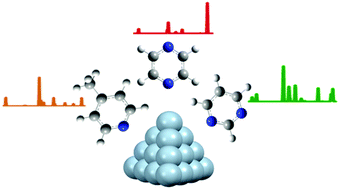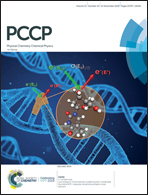Charge-transfer surface-enhanced resonance Raman spectra of benzene-like derivative compounds under the effect of an external electric field†
Abstract
Since the discovery of surface-enhanced resonance Raman scattering (SERS), elucidating the charge-transfer (CT) mechanism has been a challenging and controversial process. Different theoretical models have been proposed to explain the effect of applied electrode potential on SERS-CT, but achieving a high-quality conserved trend of experimental observations and explaining the nature of the selective enhancement of the signals is not a trivial task and the results and conclusions are still in dispute. We investigated recently the performance of time-dependent excited-state gradient approximation under the effects of a uniform finite electric field in a simulation of the experimental spectra of pyridine on an Ag electrode. The singular patterns of the experimental spectra for symmetric and non-symmetric benzene-like derivative compounds and the consistent trends of enhancements of their signals under various electrode potentials motivated us to extend our simulation studies to 4-methylpyridine, pyrazine and pyrimidine molecules on silver metal clusters. For these molecules, selective enhancement and de-enhancement of totally symmetric (υ6a, υ9a and υ8a) and non-totally symmetric (υ6b and υ8b) modes upon changing the field were obtained and matched well with experimental observations. The selective enhancement of each signal in a zero field was explained by means of excited-state vector gradients and excited-state charge density difference for the S0 → SCT transition. On-field calculations showed slight perturbations of the geometries and electronic structures of the molecules. These on-field calculations also directly affected the magnitude of specific excited-state vector gradients and dimensionless displacements, and moreover the patterns of the spectra. The results of this investigation provided insight into the nature of the selective enhancements of signals and may help researchers propose the selection rules of SERS-CT.



 Please wait while we load your content...
Please wait while we load your content...